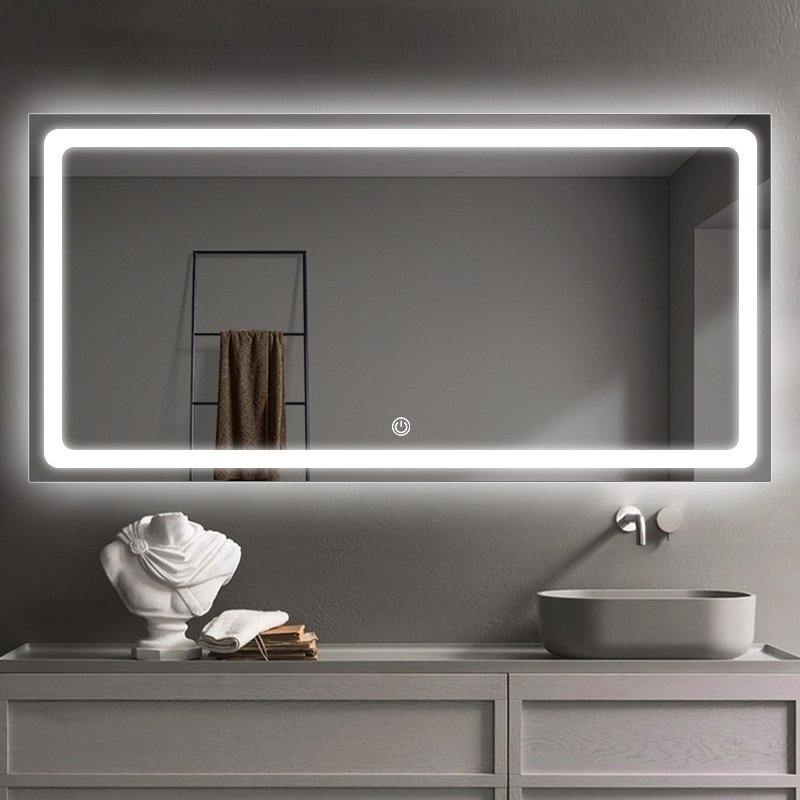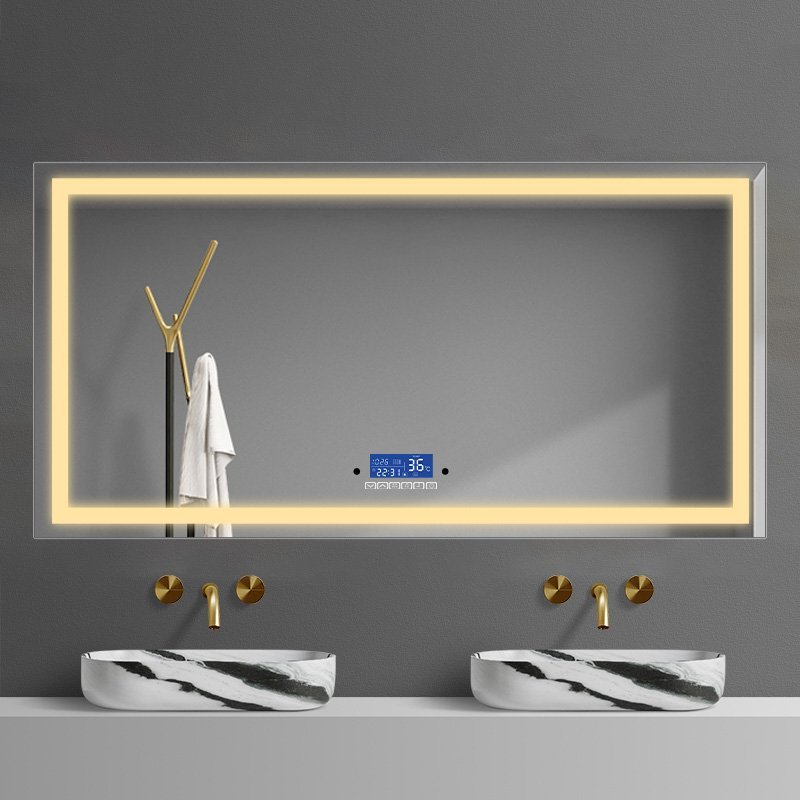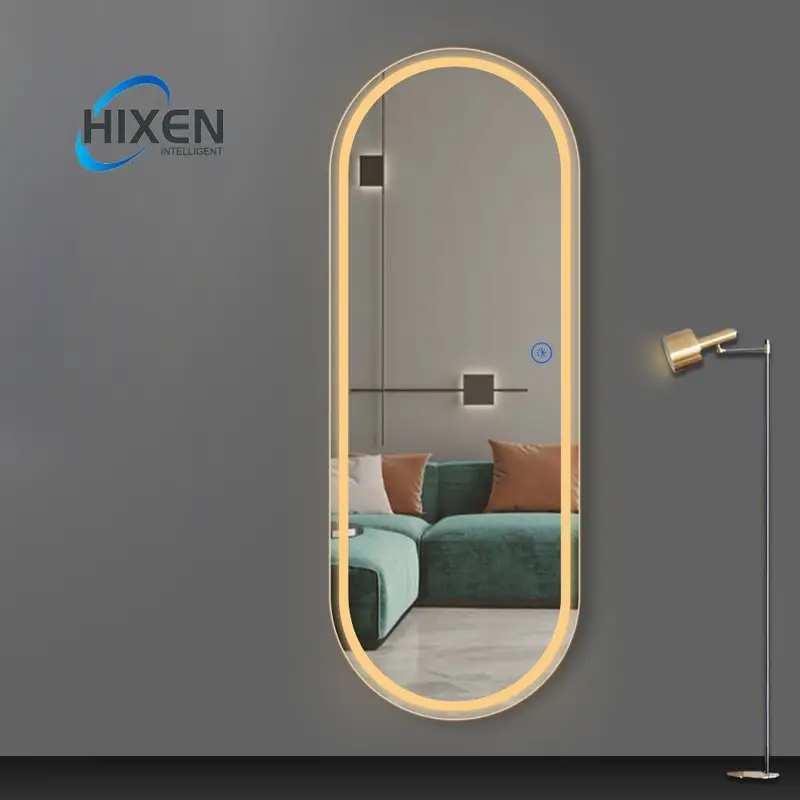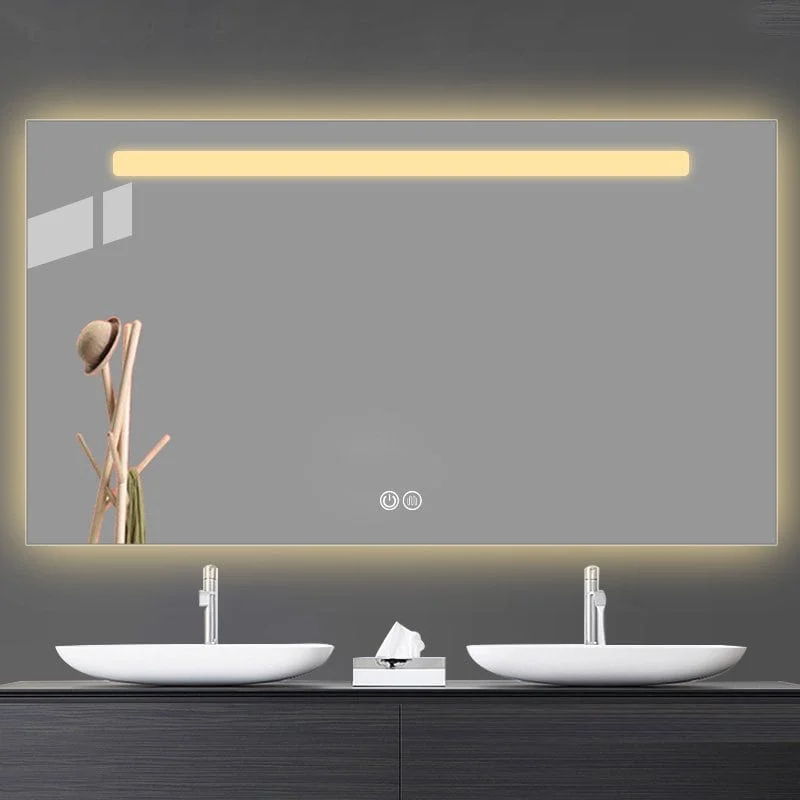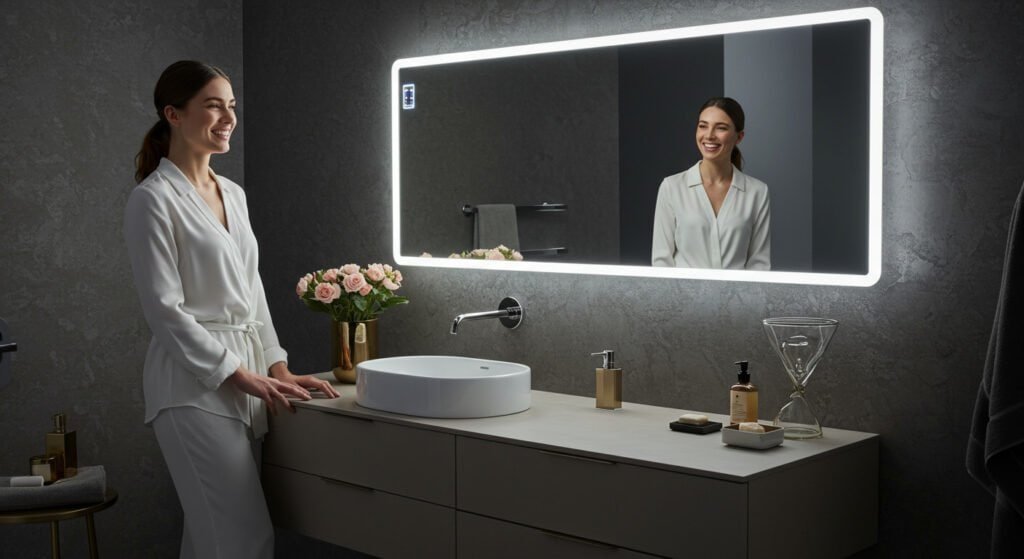|
あなたを取得します トリニティオーディオ プレイヤーレディ...
|
Do LED Mirrors Need to Be Plugged In?LED mirrors do not always require plug-in connections. Installation options include hardwired connections, plug-in adapters, and innovative battery powered led bathroom mirror solutions that eliminate electrical cord requirements entirely.
Many LED mirrors offer hardwired installation options that connect directly to bathroom electrical circuits, eliminating the need for visible plugs or cords while providing permanent, reliable power connections.
Professional installation considerations vary significantly between plug-in and hardwired LED mirror options. Hardwired installations require qualified electrical work to ensure proper circuit integration, GFCI protection, and code compliance in bathroom environments.
These installations typically provide superior long-term reliability and cleaner aesthetics, particularly important for bathroom vanity mirrors in high-end renovations. Plug-in alternatives offer greater installation flexibility but may require strategic outlet placement and careful cord management to maintain bathroom safety and visual appeal.
Understanding the electrical requirements will help you make informed decisions about your bathroom mirror installation and ensure optimal performance.
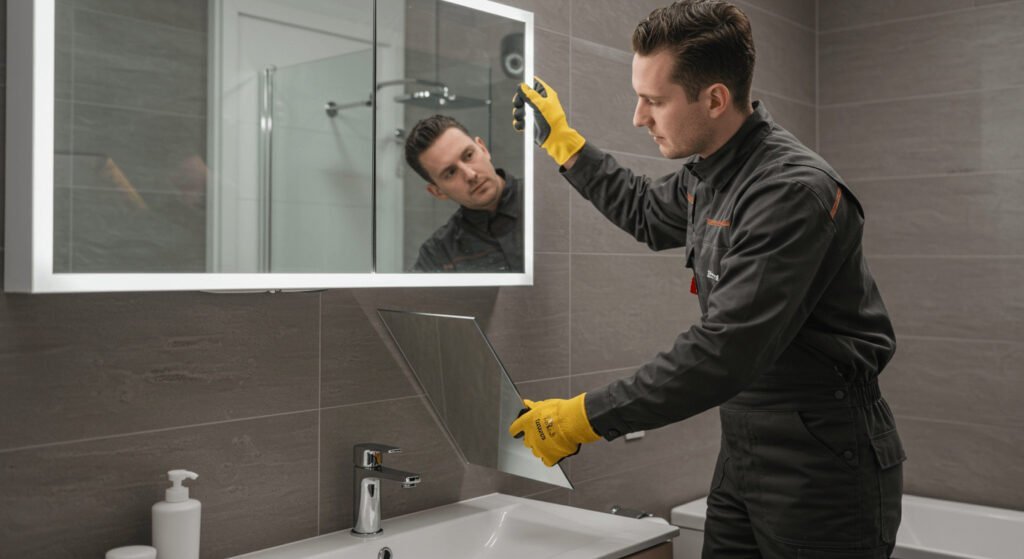
Do You Need to Plug-in an LED Bathroom Mirror?
Not all LED bathroom mirrors require plug-in connections. The power connection method depends on the mirror type, with options including hardwired connections, plug-in adapters, and battery-powered alternatives for different installation scenarios.
Some LED mirrors require plug-in connections using standard outlets, while others connect directly to electrical circuits through hardwired installations, and battery powered led mirror options eliminate plug-in requirements entirely.
Plug-in LED mirrors provide convenient installation options for various bathroom configurations. Standard plug-in models work well for bathroom renovations where adding hardwired connections proves challenging or expensive. These lighted bathroom mirror options typically include long cords allowing flexible positioning relative to outlet locations.
しかし, cord management becomes important for maintaining clean aesthetics in bathroom environments. Modern plug-in designs often incorporate cord concealment features or mounting systems that minimize visible wiring while ensuring safe electrical connections.
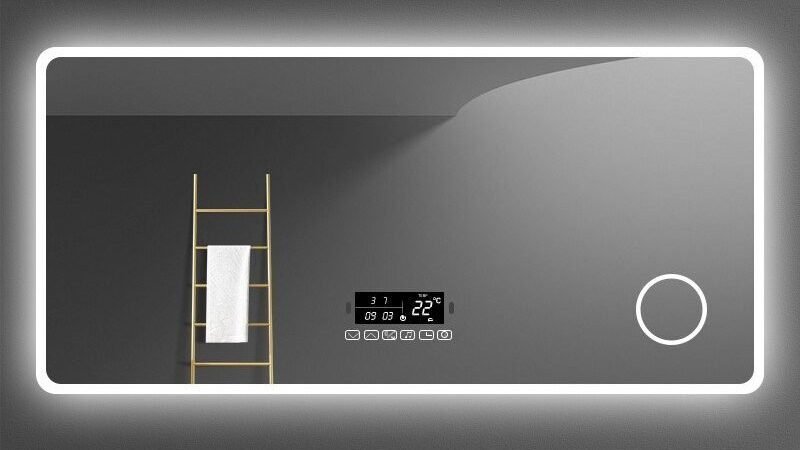
Do LED Mirrors Need Power?
LED mirrors absolutely require power to function properly. The LED lighting system, which provides the primary illumination feature, cannot operate without electrical energy. Modern lighted mirrors for bathrooms incorporate sophisticated circuitry that converts standard household alternating current into low-voltage direct current suitable for LED components.
LED mirrors need power because they contain electronic components including LED light strips, control circuits, and often additional features such as defogging systems, Bluetooth接続, and touch sensors.
Beyond basic illumination, contemporary LED bathroom mirrors integrate multiple power-dependent functions. The best led bathroom mirrors feature dimming controls, color temperature adjustment, and smart connectivity options that all require consistent electrical power.
Premium models may include built-in speakers, digital displays showing time and temperature, and motion sensors for automatic activation. These advanced features demonstrate why modern bathroom mirror designs have evolved from simple reflective surfaces to sophisticated electronic devices requiring reliable power sources.
How Are LED Bathroom Mirrors Powered?
LED bathroom mirrors utilize internal transformers that convert standard 110-120V household alternating current into low-voltage direct current ranging from 12V to 24V. This conversion process ensures safe operation in bathroom environments while maintaining optimal LED performance.
The power conversion system includes a built-in transformer or external power adapter that steps down the voltage and converts AC to DC power suitable for LED components and control electronics.
The electrical architecture of lighted vanity mirrors incorporates several key components working together to provide safe, efficient operation. The primary transformer reduces household voltage to safe levels, while rectifier circuits convert alternating current to the direct current required by LED technology.
Voltage regulation circuits maintain consistent power delivery, preventing fluctuations that could damage sensitive LED components. Modern LED mirror designs often include power management systems that optimize energy consumption, automatically adjusting brightness based on ambient light conditions or user preferences through integrated sensors and control interfaces.
How Do LED Mirrors Get Power?
LED mirrors receive power through two primary methods: hardwired electrical connections integrated into bathroom wall circuits or plug-in connections using standard electrical outlets. The power delivery method depends on the specific mirror design and installation requirements.
Hardwired LED mirrors connect directly to bathroom electrical circuits through junction boxes, while plug-in models use standard electrical outlets with built-in or external power adapters.
Installation flexibility represents a significant advantage in modern LED mirror designs. Hardwired installations typically provide cleaner aesthetics by eliminating visible cords, making them ideal for bathroom vanity mirrors in upscale renovations.
These installations require professional electrical work to ensure proper circuit integration and compliance with bathroom electrical codes. Plug-in LED mirrors offer greater installation flexibility, allowing homeowners to position mirrors without dedicated electrical circuits. This approach proves particularly beneficial for renters or temporary installations where permanent electrical modifications are not feasible.

Do LED Mirrors Work with a Battery?
はい, battery powered LED mirror options are available, though they represent a smaller segment of the LED mirror market. These mirrors utilize rechargeable battery systems or replaceable batteries to power LED lighting and basic control functions.
Battery operated bathroom mirror models work effectively for locations without convenient electrical access, though they require periodic charging or battery replacement and typically offer limited feature sets compared to electrically powered alternatives.
Battery powered LED Mirror Full Length options demonstrate the versatility of portable LED mirror technology. These mirrors typically utilize lithium-ion battery systems providing several hours of continuous operation between charges. USB charging ports enable convenient power replenishment using standard charging cables.
しかし, battery powered led bathroom mirror options generally offer simplified feature sets, focusing on essential lighting functions while omitting power-intensive features like defogging systems, Bluetooth接続, or digital displays. Battery life varies significantly based on LED brightness settings, usage patterns, and battery capacity, making them most suitable for intermittent use or locations where electrical power access presents significant installation challenges.
| Power Type | Installation Complexity | Feature Availability | Long-term Reliability | Maintenance Requirements |
|---|---|---|---|---|
| Hardwired | High – Professional required | Full features available | Excellent | Minimal |
| Plug-in | 中くらい – DIY friendly | Full features available | Very Good | Minimal |
| Battery | 低い – No electrical work | Limited features | 良い | Regular charging/replacement |
How Do LED Mirrors Work?
LED mirrors operate through integrated electronic systems that combine reflective surfaces with energy-efficient LED lighting arrays. The electrical system converts household power into appropriate voltage levels for LED operation while providing user control interfaces.
LED mirrors function by converting electrical power through internal transformers, distributing current to LED light strips positioned around or behind the mirror surface, controlled by electronic circuits that manage brightness, color temperature, and additional features.
The technological foundation of modern lighted vanity mirrors encompasses sophisticated electronic control systems managing multiple functions simultaneously. LED light distribution systems position individual LED chips strategically around mirror perimeters or behind translucent panels to achieve uniform illumination without creating shadows or hot spots.
Advanced models incorporate microprocessors that control dimming functions, color temperature adjustment, and smart connectivity features. Touch-sensitive controls replace traditional switches, providing intuitive user interfaces that respond to light finger pressure. Premium LED bathroom mirror designs include memory functions that recall user preferences, automatic brightness adjustment based on ambient light conditions, and wireless connectivity enabling smartphone control and integration with home automation systems.
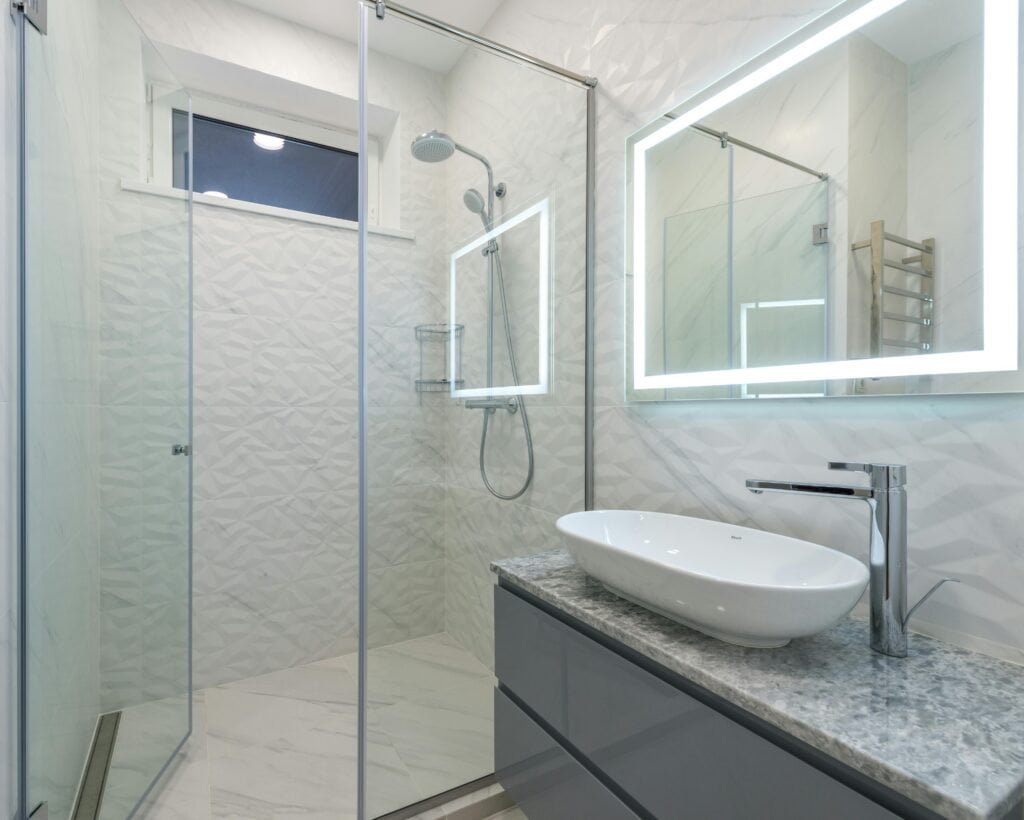
How Much Electricity Do LED Mirrors Consume?
LED mirrors consume significantly less electricity compared to traditional incandescent bathroom lighting. Typical LED bathroom mirror power consumption ranges from 15 に 40 ワッツ, depending on mirror size, LED quantity, and additional features.
Modern LED mirrors use approximately 80% less energy than equivalent incandescent lighting while providing superior illumination quality and longer operational life spans.
Energy efficiency analysis reveals substantial cost savings associated with LED mirror technology. A standard lighted vanity mirror consuming 25 watts operating two hours daily costs approximately $6-8 annually in electricity at average utility rates. Comparable incandescent lighting would consume 100-150 ワッツ, resulting in $25-35 annual operating costs.
LED technology provides additional benefits including reduced heat generation, important in bathroom environments where excess heat can increase air conditioning loads. The environmental impact of LED bathroom mirrors remains minimal due to their low power consumption and extended operational lifespans exceeding 25,000 hours of typical use.
| ミラータイプ | Power Consumption | Annual Operating Cost | Lifespan | Heat Generation |
|---|---|---|---|---|
| LEDバスルームミラー | 15-40 ワッツ | $6-15 | 25,000+ 時間 | Minimal |
| Incandescent Vanity Light | 100-200 ワッツ | $40-80 | 1,000 時間 | High |
| Fluorescent Bathroom Light | 20-40 ワッツ | $8-16 | 8,000 時間 | Moderate |
Are LED Bathroom Mirrors Safe to Use with Electricity?
LED bathroom mirrors maintain excellent safety records when properly manufactured and installed according to electrical codes. Modern LED mirrors incorporate multiple safety features including low-voltage operation, GFCI compatibility, and appropriate IP ratings for bathroom moisture exposure.
LED mirrors are safe for bathroom use because they operate on low-voltage DC power, include proper moisture protection ratings, and meet electrical safety standards for wet location installations.
Safety certifications and compliance standards ensure reliable operation of modern bathroom mirror designs. Reputable manufacturers provide LED mirrors with UL listing, CE marking, or equivalent safety certifications demonstrating compliance with electrical safety standards. IP44 or higher moisture protection ratings indicate suitable performance in bathroom environments where water splashing may occur. LED mirror without electrical connection options, such as battery operated mirror wall mounted models, eliminate electrical safety concerns entirely while providing essential lighting functionality. Professional installation of hardwired LED mirrors ensures proper GFCI protection and grounding, critical safety requirements for bathroom electrical devices.
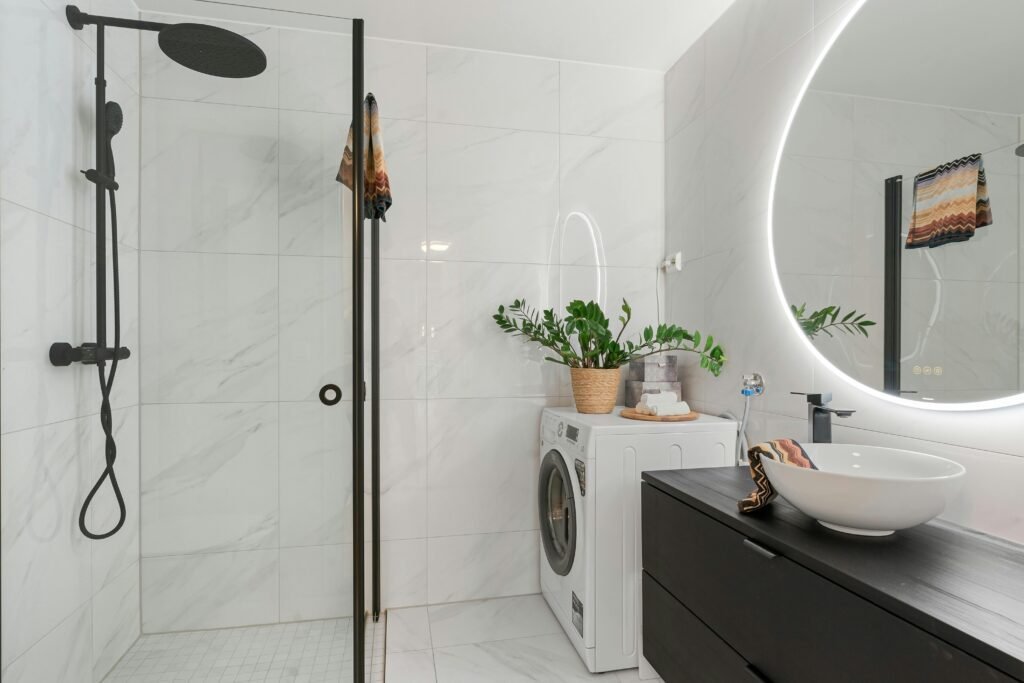
Understanding the pros and cons of lighted mirrors helps buyers make informed decisions about bathroom lighting solutions. Advantages include energy efficiency, long operational life, consistent illumination quality, and integration of advanced features. Potential disadvantages may include higher initial costs compared to basic mirrors and dependency on electrical power for functionality. しかし, the overwhelming benefits of LED technology, combined with improved safety features and reduced operating costs, make LED bathroom mirrors an excellent investment for modern bathroom renovations.
Understanding the pros and cons of lighted mirrors helps buyers make informed decisions about bathroom lighting solutions. Advantages include energy efficiency, long operational life, consistent illumination quality, and integration of advanced features. Potential disadvantages may include higher initial costs compared to basic mirrors and dependency on electrical power for functionality. しかし, the overwhelming benefits of LED technology, combined with improved safety features and reduced operating costs, make LED bathroom mirrors an excellent investment for modern bathroom renovations.
結論
LED bathroom mirrors require electricity to operate but utilize safe, efficient power systems designed specifically for bathroom environments, offering superior lighting performance while maintaining excellent safety standards.
- 適切なバスルームミラーを選ぶ方法を学ぶには、ここをクリックしてください.
- ミラーのインストール方法を学ぶには、こちらから選択してください.
- 適切なサイズのミラーを選ぶ方法を学ぶには、ここをクリックしてください.
- ミラーの作成方法を学ぶには、ここをクリックしてください.
- ここをクリックすると、なぜ鏡で見栄えがする理由がわかります.
- ここをクリックしてください。上部について学びます 10 のLEDミラーメーカー 2024.
- ここをクリックして、なぜ私のバニティミラーライトが点灯しないのかを確認してください?
- バスルームミラーの身長をご覧ください? ここをクリック
- 鏡をきれいにする方法がわからない場合は、ここをクリックしてください
- タッチセンサーミラーを修正する方法を見つけるには、ここをクリックしてください
- 探し出す 10 LEDバスルームミラーの一般的な問題はここをクリックしてください






